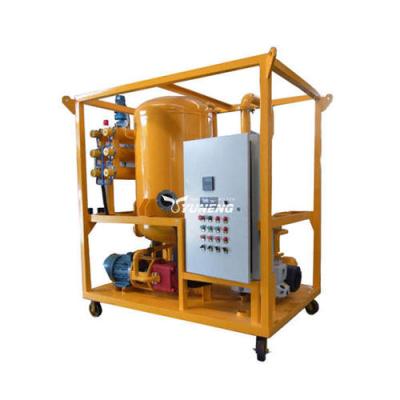Categories
Tags
-
#Portable Oil Purification
#6000LPH Transformer Oil Purifiers
#Mobile Dry Air Compressor
#Transformer Vacuum Pumping
#Vacuum Pumping Systems
#Single Stage Transformer Oil Purification Plants
#Transformer Oil Regeneration Machine
#Transformer Oil Dehydration Machines
#Lube Oil Purifiers
#Transformer Oil Degassing
Archives
The Cost of Ignoring Transformer Oil Degassing
-
Transformer oil is more than a cooling medium; it is an essential insulating component that protects the transformer from electrical failure. Over time, operational stresses can introduce gases into the oil, diminishing its dielectric strength and potentially causing catastrophic damage. Ignoring transformer oil degassing may seem like a minor oversight, but the financial and operational consequences can be significant.
Why Transformer Oil Degassing Matters
During normal operation, transformers produce dissolved gases as byproducts of thermal and electrical stresses. Common gases include hydrogen, methane, ethylene, and acetylene. Accumulation of these gases can indicate early signs of insulation degradation, overheating, or partial discharge activity. If these gases are not removed, the oil’s insulating properties deteriorate, increasing the risk of short circuits, arcing, and even transformer explosions.
Financial Implications of Neglecting Degassing
The cost of ignoring degassing goes far beyond routine maintenance. A transformer failure can lead to unplanned outages, equipment replacement, and regulatory penalties in certain industries. The expenses associated with a single catastrophic transformer failure can range from tens of thousands to millions of dollars, depending on transformer size and criticality. Additionally, downtime can disrupt power supply, affecting industrial operations and public utilities, creating cascading financial losses.
Operational and Safety Risks
Failing to degas transformer oil also raises safety concerns. Gas accumulation can lead to overpressure conditions inside the transformer tank, creating the risk of ruptures or explosions. Maintenance personnel and nearby equipment may be put at risk, making preventive degassing not just a financial imperative but a safety requirement. Regular gas analysis and degassing can detect early warning signs, reducing the likelihood of dangerous incidents.
Long-Term Consequences
Over time, neglecting degassing accelerates insulation aging and decreases transformer efficiency. Oil with high gas content loses its cooling and dielectric effectiveness, forcing the transformer to operate under suboptimal conditions. This increases wear on the windings and insulation, shortening the asset’s operational life and necessitating early replacement. Preventive degassing, on the other hand, maintains oil quality, ensuring the transformer functions reliably for its intended lifespan.
Conclusion
The cost of ignoring transformer oil degassing is multifaceted, encompassing financial, operational, and safety risks. Regular degassing, combined with routine oil analysis, helps prevent equipment failure, prolongs transformer life, and ensures consistent electrical performance. Proactive maintenance is far more economical than reactive replacement, highlighting the importance of viewing degassing as an essential component of transformer management rather than an optional task.
